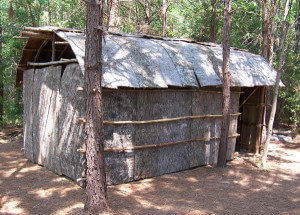Incredible Indigenous Groups
- ellery34
- Nov 4
- 3 min read
The Americas are believed to have been first populated at most 20,000 years ago, using a land bridge between modern-day Russia and Alaska, or down the coast of this same area. Over the next 19,000 years, the inhabitants of the Americas flourished into countless culturally-rich groups, all completely isolated from any other continent.
While many Native American groups have since died out, due to the introduction of disease and colonization, their cultures are still incredibly valuable and worth learning about, as evidenced by the many celebrations of Native American culture and heritage found across the Americas. The US, for instance, created the National American Indian Heritage Month in 1990 for every November.
In Union County, specifically, there were quite a few Native American groups, such as the Waxhaw, Catawba, or Cheraw!
The Catawba
One major group which lived in what is today Union County is the Catawba. When colonizers first encountered the Catawba people, they had a population of between 15 and 25 thousand. They lived in small villages surrounded by a wooden wall. They likely got most of their food from a mix of agriculture and hunting and gathering. The Catawba are known for having one of the oldest pottery traditions in the Americas.

The Catawba suffered from several epidemics, causing their population to decrease several times throughout history, reaching a low of just over 100 people in 1826. In 1959, the Catawba were terminated as a tribe in the hopes of integrating them into American society, but they successfully petitioned for their tribe to be reestablished in 1993. Today, there is a small reservation for this group just over the border into South Carolina, with a population of 849, as of the 2020 census.
There is a major river named after this group (or, more accurately, they are named after the river, also being called Iswa, which is derived from the Catawba phrase translated as "people of the river."), which runs from western North Carolina to Lake Wateree in South Carolina. The river is about 220 miles long.
The Waxhaws
Another of the local groups who lived in the area of modern-day Union County is the Waxhaws. Unfortunately, the group died out or were assimilated into other groups by the mid 18th century, so we know little about the Waxhaws.
What we do know is that, at the turn of the 18th century, they existed as a population of about 2,000 split between two villages. Their shelters were longhouses, made of wood and bark.
The Waxhaws likely grew corn, beans, and squash together, in the traditional Three Sisters method. They also hunted nearby game and likely foraged things such as acorns, walnuts, sorrels, or berries.
Unfortunately, by the 1740's, the Waxhaws had died out. With the movement of people into the New World, disease followed, and people native to the Americas had no resistance for these unfamiliar diseases, leading to catastrophic death. A large number of the Waxhaws also fought and likely died in the Yamasee War. Between these two, there was unlikely to have been a large enough population to sustain an independent group, so they assimilated into other nearby groups, such as the Cheraw or Catawbas.
The town Waxhaw in Union County is named after the Waxhaws. This area was the first place where gold was discovered in the US by colonizers. Over 50,000 ounces of gold were extracted from the area before the mines closed when the US joined World War II.
Learn More
The Union County Library system has some good resources on Native American groups, such as "Native Americans" and "The state of North Carolina with native American ancestry : the formation of the eastern and costal counties in North Carolina"
Sources:









Comments